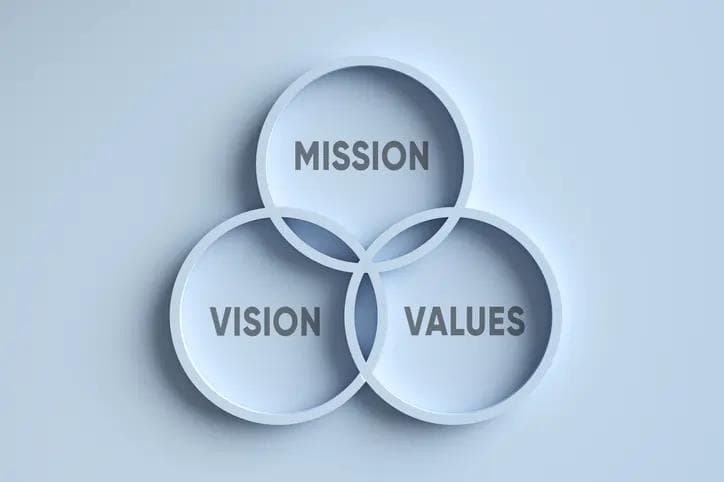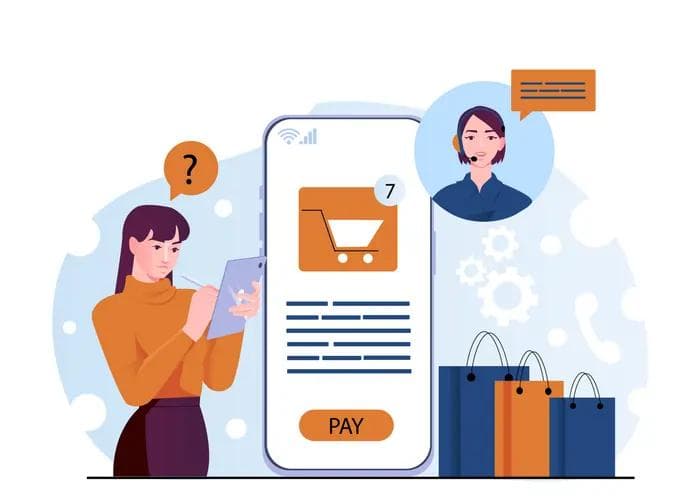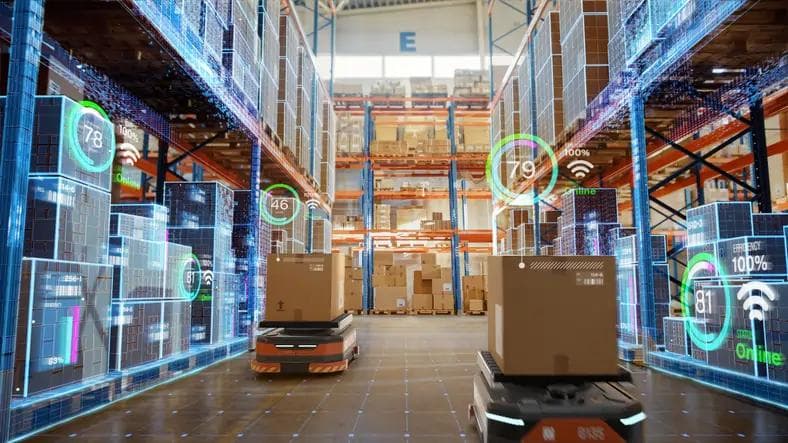By Halil Aksu, CEO of Digitopia
Shopping season is here. All the way through to January, consumers have an opportunity to spend money in shops. Specially invested days such as Black Friday, Cyber Monday, Single’s Day in China, and Prime Day by Amazon have all fuelled commerce. Not only has COVID-19 encouraged our consumerist behaviour with the long-awaited re-opening of dining, socialising and shopping, but more so digital augmentation.
Now that almost everyone is an online expert, a true shake-out in the retail industry is taking place. Where the bigger and better retailers are becoming more successful, the smaller and weaker are rendered obsolete. Bad management, wrong product portfolios, improper prices and understanding the customer are all reasons for this growing gap.
We became homo consumericus
First of all, it’s important that we understand where this festive shopping madness originated from. Consumerism – it is an integral and indispensable part of society and way of living. So, highstreet retailers are expecting us in their stores for the next couple of months.
Particularly, coming out of lockdown and staying home for quite a while, consumers are very keen and motivated to return to the shops. With this in mind, this coming season should be a strong one.
Covid changed everything forever
However, there is an important change in habit. Not only the cautiousness of social distancing and hygiene expectations, but more so digital augmentation. During the pandemic everybody became an online expert. Searching, sharing, comparing, commenting, analysing, auctioning, bargaining, waiting for the right moments to buy from the best retail sites, via the best channels, with the most convenient means of payment has all become mainstream behaviour.
Retail is experiencing a full do-over. The bigger and better retailers are becoming more successful while the smaller and weaker retailers are rendered obsolete. Starting from 2015 CB Insights reports 135 bankruptcies in the retail industry. This has accelerated even further as a result of Covid and will continue well into the future.
This poses the question: why does this happen? There are multiple reasons, starting with bad management, not keeping up to date, inaccurate product portfolio, improper prices, and many more. But most importantly it always comes back to the customer. Do you know them? Do you care about them? Do you really try to understand them, provide the best possible service and prices, and most importantly, the best possible experience, via all channels, at all touchpoints, at all times?
eCommerce has become second nature for consumers. In 2020 eCommerce volume jumped from 3 Trillion USD to above 4 Trillion USD and is expected to reach almost 5 Trillion USD in 2021. Further reports forecast continued growth, reaching 6.4 Trillion USD in 2024. Shopify wrapped these numbers with some other insight they gained from their own activities.
eCommerce still holds around 20% of the total retail market. So when we speak about 25 Trillion USD in total consumer spending, 20 Trillion USD of this will be taken via physical retail stores, creating hundreds of millions of jobs, an adjacent real estate market, and many other activities related with the physical retail industry.
Bricks versus Clicks: Who will prevail?
Who will win this season? Who will capture more attention? Shops, marketplaces or super apps? What will be the most important reasons why people prefer a certain app or site or store?
Habits should not be underestimated. Habits make us feel at home. We’ll favour the stores with the best parking facilities, prices, products and smiling staff. However, habits are anything but rational reasons. They have been hard-wired in our brains for years, and we truly believe that they are valuable, convenient, and logical. This only changes when we tap into something even better, consciously, or accidentally.
During lockdown many people tried their hand at eCommerce websites and apps for the very first time. Some liked it, some not. Some benefited from it, some disliked the services and products. For some it will stick, for some it causes an even bigger desire to go out shopping again.
Payments will make a difference
Nobody likes to stay in queues. Check-out, return, complaints, and similar services or steps of shopping can make or break the overall experience. This is true for both online and physical shops. Ensuring processes that are streamlined and automated as much as possible will be the best way to create positive experiences.
One of the most important convenience enablers is the point of sale. Contactless, one-click-order, subscription features, click and collect, last-mile-delivery, and many more innovations trap and spoil consumers. As a result, anything below a swift and quality service will deter the consumer immediately.
Retailers and eCommerce sites alike, must embrace any means of payments, to improve convenience, to provide options, and to capture business. The ones adopting fastest, simplest, and with the most variety will have a substantial advantage above the others.
Intelligence is your friend
The more data a retailer collects, the sharper its analytical skills will be and the better its intelligence will become. This is true not only for customer analytics, but also for product analytics, process, and supply chain analytics, even in the areas of risk, fraud, pricing, and many more.
Analytics helps retailers examine the past as well as the future. Demand forecasting and supply chain planning are critical capabilities to achieve optimal availability in stores, warehouses and in the overall value chain.
Digital is the key to success
Payments, intelligence, convenience, efficiency, and even sustainability is supported by digital. Ultimately, retailers that use this to their advantage will prosper while those who don’t will suffer, struggle, and run into deep trouble.
Retail is one of the fastest, most competitive, ever-changing industries out there. Digital offers speed, intelligence, and flexibility to adapt quickly to market changes and consumer expectations. Digital provides better experiences for consumers, employees, and business partners.
Businesses can learn from the retail sector during the holiday season. Whether it’s the service, hospitality, finance, security or automotive industry, we are all dealing with the same person: the consumer. The pandemic wasn’t just a wake up call for retailers to improve their targeting, payments and data handling, but for any company in the post-COVID era. Let this be an opportunity to examine how we can all better our customer facing services from browsing to point of sale this festive period.
By Halil Aksu, CEO of Digitopia
Shopping season is here. All the way through to January, consumers have an opportunity to spend money in shops. Specially invested days such as Black Friday, Cyber Monday, Single’s Day in China, and Prime Day by Amazon have all fuelled commerce. Not only has COVID-19 encouraged our consumerist behaviour with the long-awaited re-opening of dining, socialising and shopping, but more so digital augmentation.
Now that almost everyone is an online expert, a true shake-out in the retail industry is taking place. Where the bigger and better retailers are becoming more successful, the smaller and weaker are rendered obsolete. Bad management, wrong product portfolios, improper prices and understanding the customer are all reasons for this growing gap.
We became homo consumericus
First of all, it’s important that we understand where this festive shopping madness originated from. Consumerism – it is an integral and indispensable part of society and way of living. So, highstreet retailers are expecting us in their stores for the next couple of months.
Particularly, coming out of lockdown and staying home for quite a while, consumers are very keen and motivated to return to the shops. With this in mind, this coming season should be a strong one.
Covid changed everything forever
However, there is an important change in habit. Not only the cautiousness of social distancing and hygiene expectations, but more so digital augmentation. During the pandemic everybody became an online expert. Searching, sharing, comparing, commenting, analysing, auctioning, bargaining, waiting for the right moments to buy from the best retail sites, via the best channels, with the most convenient means of payment has all become mainstream behaviour.
Retail is experiencing a full do-over. The bigger and better retailers are becoming more successful while the smaller and weaker retailers are rendered obsolete. Starting from 2015 CB Insights reports 135 bankruptcies in the retail industry. This has accelerated even further as a result of Covid and will continue well into the future.
This poses the question: why does this happen? There are multiple reasons, starting with bad management, not keeping up to date, inaccurate product portfolio, improper prices, and many more. But most importantly it always comes back to the customer. Do you know them? Do you care about them? Do you really try to understand them, provide the best possible service and prices, and most importantly, the best possible experience, via all channels, at all touchpoints, at all times?
eCommerce has become second nature for consumers. In 2020 eCommerce volume jumped from 3 Trillion USD to above 4 Trillion USD and is expected to reach almost 5 Trillion USD in 2021. Further reports forecast continued growth, reaching 6.4 Trillion USD in 2024. Shopify wrapped these numbers with some other insight they gained from their own activities.
eCommerce still holds around 20% of the total retail market. So when we speak about 25 Trillion USD in total consumer spending, 20 Trillion USD of this will be taken via physical retail stores, creating hundreds of millions of jobs, an adjacent real estate market, and many other activities related with the physical retail industry.
Bricks versus Clicks: Who will prevail?
Who will win this season? Who will capture more attention? Shops, marketplaces or super apps? What will be the most important reasons why people prefer a certain app or site or store?
Habits should not be underestimated. Habits make us feel at home. We’ll favour the stores with the best parking facilities, prices, products and smiling staff. However, habits are anything but rational reasons. They have been hard-wired in our brains for years, and we truly believe that they are valuable, convenient, and logical. This only changes when we tap into something even better, consciously, or accidentally.
During lockdown many people tried their hand at eCommerce websites and apps for the very first time. Some liked it, some not. Some benefited from it, some disliked the services and products. For some it will stick, for some it causes an even bigger desire to go out shopping again.
Payments will make a difference
Nobody likes to stay in queues. Check-out, return, complaints, and similar services or steps of shopping can make or break the overall experience. This is true for both online and physical shops. Ensuring processes that are streamlined and automated as much as possible will be the best way to create positive experiences.
One of the most important convenience enablers is the point of sale. Contactless, one-click-order, subscription features, click and collect, last-mile-delivery, and many more innovations trap and spoil consumers. As a result, anything below a swift and quality service will deter the consumer immediately.
Retailers and eCommerce sites alike, must embrace any means of payments, to improve convenience, to provide options, and to capture business. The ones adopting fastest, simplest, and with the most variety will have a substantial advantage above the others.
Intelligence is your friend
The more data a retailer collects, the sharper its analytical skills will be and the better its intelligence will become. This is true not only for customer analytics, but also for product analytics, process, and supply chain analytics, even in the areas of risk, fraud, pricing, and many more.
Analytics helps retailers examine the past as well as the future. Demand forecasting and supply chain planning are critical capabilities to achieve optimal availability in stores, warehouses and in the overall value chain.
Digital is the key to success
Payments, intelligence, convenience, efficiency, and even sustainability is supported by digital. Ultimately, retailers that use this to their advantage will prosper while those who don’t will suffer, struggle, and run into deep trouble.
Retail is one of the fastest, most competitive, ever-changing industries out there. Digital offers speed, intelligence, and flexibility to adapt quickly to market changes and consumer expectations. Digital provides better experiences for consumers, employees, and business partners.
Businesses can learn from the retail sector during the holiday season. Whether it’s the service, hospitality, finance, security or automotive industry, we are all dealing with the same person: the consumer. The pandemic wasn’t just a wake up call for retailers to improve their targeting, payments and data handling, but for any company in the post-COVID era. Let this be an opportunity to examine how we can all better our customer facing services from browsing to point of sale this festive period.

























